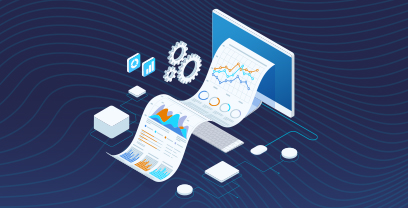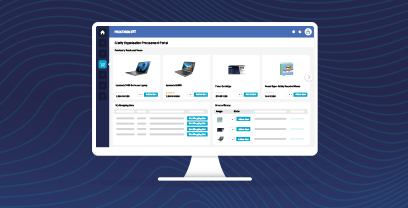|
The Forrester Wave™: Supplier Value Management Platforms, Q3 2024 See Report
Blog »
Why e Procurement Systems are the Secret Weapon for Public Sector
Innovating to Uncover New Sources of Revenue in the Public Sector
As the country nears one full year of coping with Covid-19, we can all agree that the effects on the US economy have been profound. While some industries/verticals have fared better than others, it is fair to say that ALL have been affected in some way. The Public Sector is no exception.
It’s no secret that government revenues are down at the national, state, and municipal level as a result of the pandemic. And most forecasters aren’t predicting an upswing, at least in the short term.
While tax revenue shrinks, the pressure on government entities to spend more is (in many cases) increasing. Although that pressure can be relieved somewhat by the Federal Government with initiatives such as the CARES Act, states and municipalities are being forced to “think differently” about new revenue channels.
Step 1: Use e Procurement Systems as a Potential Source of Revenue
Thinking of procurement as a new source of revenue is certainly counterintuitive, but it fits the bill of thinking differently. e Procurement has been part of the technology footprint in many states for decades, to reduce cycle times, streamline processes, and collaborate with suppliers.
However, a smaller subset of these states have looked at e Procurement as a potential source of revenue. Early pioneers of this approach include the states of Florida, North Carolina, and Virginia. Several years ago, all three states instituted a transaction fee model, whereby vendors were assessed a fee for revenue accumulated through purchases in the state e Procurement system.
These fees made up a relatively small portion of the overall vendor revenue, ranging from a fraction of a percent up to nearly 2% of the purchase. Evolution of the rules around the fees collected were extensive and varied widely from state to state. Some examples of these additional modifications include exemptions for small businesses and maximum “cap” amounts.
Step 2: Use e Procurement systems for vendor relationships
While vendors in these arrangements aren’t necessarily thrilled about the transaction fees, most understand that the benefits of e Procurement system use make the additional cost of doing business worthwhile.
This includes gaining greater visibility into potential business through a transparent, competitive, and frictionless process, whether they are awarded a contract or not. Additionally, transaction fees require the vendor to pay only if they win business, as opposed to a ‘pay to play’ model which limits competition among potential vendors.
Vendors also see transaction fees as a necessary evil to unlock the benefit of gaining additional business from public bodies and external entities through leveraging statewide and cooperative contracts.
Step 3: Drive Value with State Procurement Agreements
Statewide and cooperative contracts allow other government entities to gain value from purchasing from state procurement agreements. This practice, often referred to as piggybacking, grants Public Sector partners access to make purchases using contracts negotiated by state procurement offices.
These partners are public bodies within the borders of the state (such as universities, cities, and municipalities) as well as government organizations outside state borders. Regardless of the location of the partner, there is great value in being able to make purchases using favorable terms in the original contract.
And just as there were pioneers that extracted the value of vendor transactions, there are now pioneers extracting value from these agreements by charging fees to the piggybacking partner or supplier.
Bypassing re-solicitation, which can take months and many hours of procurement resources’ valuable time, is just one of the advantages of piggybacking.
In addition, these partner contracts provide real revenue opportunities for the contract holders. The key is being able to realize these revenue opportunities.
According to the National Association of State Procurement Officials (NASPO) 2018 Survey of State Procurement Practices:
- 32 state central procurement offices are funded by state appropriations
- 31 state central procurement offices are self-funded (or administrative fees)
- 11 state central procurement offices have other sources of funding
While several states’ central procurement offices obviously have a mix of funding sources, those self-funded sources include vendor transaction fees, partner fees for use of statewide and cooperative contracts, and the less popular vendor registration fee.
In the past, much of the funding collection from these arrangements was self-reported (including transaction fees!). State central procurement offices relied on complex manual audits to ensure nominally accurate revenue collection.
Step 4: Discover the value of Procurement solutions
With the incredible pressure on states today to find new funding sources, and ensure the collection of revenue from all sources, the need for tools to assist in the fee issuance and collection has never been more pronounced.
These tools should produce accurate insight into spend by internal organizations, external public bodies and accurately calculate fees assessed to suppliers or external organizations. The tools should also be accessible by partners and suppliers through a common procurement portal.
Ivalua, a recognized leader in the Public Sector Source-to-Pay space, has again delivered on its reputation for innovation by offering a solution that facilitates revenue collection for internal and public body partner spend.
The revenue, an all-important driver in the process, can not be realized without effective collaboration between the parties and accuracy of reported data. Ivalua’s solution delivers both while providing analytics that enable state procurement offices insights into customers’ spend and fee collection.
To be clear, Ivalua does not charge suppliers for access nor does it take a percentage of the fees collected by the states in this arrangement. Ivalua has always believed technology vendors should not monetize their customers’ supplier relationships.
But the Ivalua solution does provide much needed visibility into a new source of revenue while driving greater collaboration between states, their contract partners, and their suppliers. As organizations face the ongoing budget crisis, a self-funded model facilitated by the Ivalua solution may be the answer.
This post was co-authored by Rachel Cowgill and Sean Correll


